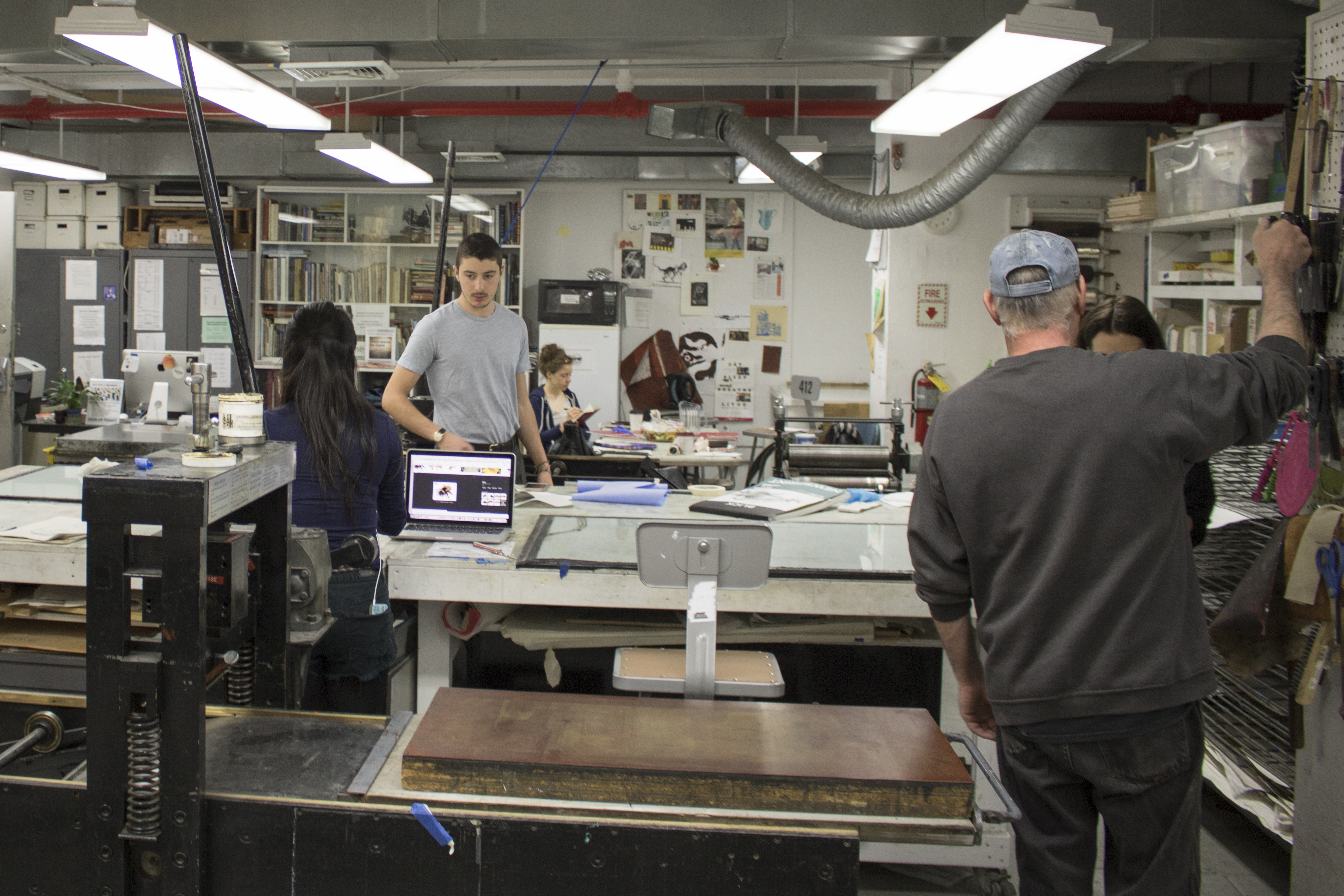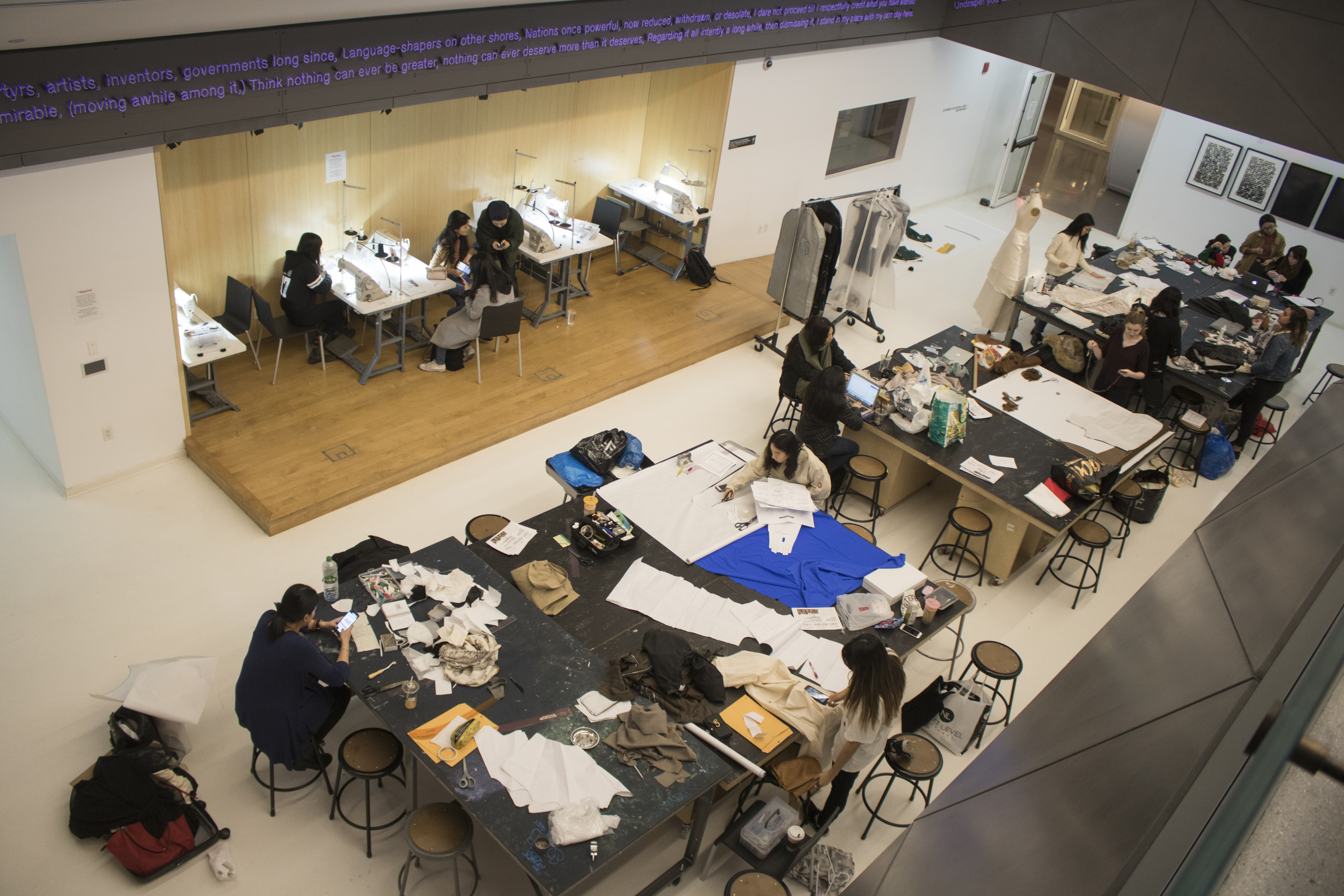A quote from a student who had asked to remain anonymous has been removed from this story.
The school’s reaction to a fire that shuttered part of Parsons until summertime has left more 4,100 students confused, scrambling and angry during the semester’s pressure-filled close.
Then came news of the contamination.
Students were told by the university that contaminants in the particulate matter that settled after the electrical fire that erupted in the basement electrical room of 2 W. 13th St. may have contaminated their projects and equipment, according to an April 27 email.
The same email recommended that all projects and personal items be disposed of to eliminate the risk of contamination, and said that all items currently in the basement would not be returned.
The news added fear to a stressful situation that has students commuting to make-shift work spaces in Brooklyn and hustling to meet strict deadlines for make-or-break events like New York Fashion Week.

Hygienist consultants Ambient Group found lead traces and dioxins, contaminants in the particulate matter that settled after the fire, in the basement but also on equipment that had been moved off site so students could continue to use it, school officials said.
“If you’re exposed, and you get that into your system, that’s a problem,” said Dr. William Esposito, the president of Ambient Group.
Ambient recommended the destruction of all artwork and personal belongings that were in the basement at the time of the fire to eliminate risk of exposure. They did however recognize that some of the particulate matter could have been pre-existing, and a consequence of the toxic chemicals used to create student projects.
This has some students feeling a sense of whiplash.
“I was told to my face by printmaking shop techs that the artwork wasn’t damaged, and was packaged up and ready to go as soon as they got access to the basement,” said Juliana Gagne, a senior printmaking major.
“If they didn’t know if we would be able to get the artwork back they should not have said anything to us until they knew for sure,” she added.
Many fear equipment like printers and printing screens, which were moved from the Parsons basement to NYU and used for more than two weeks, could have already contaminated staff and students. One student reported that soot had to be washed from these screens before they were used.
Ambient Group said those there during the fire probably weren’t contaminated, but recommended that if students are going to keep expensive reclaimed items like laptops, they should at least be cleaned thoroughly.
Joel Towers, dean of Parsons, has stated that any additional non-porous equipment will be cleaned by the university and returned.
“Nothing has been thrown out yet,” Towers said. “If we can find a way to determine if it’s clean, maybe we can return the work.”
Administrators plan to pay students for any financial losses from the fire. Nadine Bourgeois, the Parsons academic planning administrator, will spearhead that effort. Towers didn’t say how much had already been paid out.
All of this comes amid a general aggravation among Parsons students over lack of organization and deadline extensions from the school.
“Every tech I spoke to had heard different things from the school. I tried to figure out when my classes had been moved, but they would respond like 24 hours after my class,” said Hanna Margetson-Rushmore, a senior studying printmaking. “[Professors] would have no idea and wouldn’t turn up to certain classes, or they wouldn’t know where to go.”
Students are also upset that the school hasn’t found a replacement gallery space to host their end-of-term show, and have instead moved it to the University Center cafeteria, where it will take place for a week, instead of the original plans for about a month.
“I am a thesis student, the best thing I can do for my career is have a great show. We have some big names come to our shows and the school is directly harming my professional career after graduation,” Gagne said. “The public coming to the show isn’t going to know or care that I have a good excuse for not having the work be what it should.”
Students have however appreciated all that administrators have done to make the best of a difficult situation.
“I think they handled it well in terms of like, it’s an entire building that’s shut down, hundreds of classes, hundreds of students and they’ve re-placed everyone that used the building,” said Bianca Linz, a third year studying integrated design.
Administrators had to react quickly to provide spaces for these students to finish the semester following the fire.
The fire impacted 4,171 students directly through classroom changes, and more still due to the common workspaces that were located in the 13th Street building.

In the immediate aftermath, 134 individual course meetings were cancelled while administrators looked for space. No make up classes had been scheduled at the time of this article.
Of the affected courses, more than 466 workspaces had to be relocated to other parts of campus. Nine spaces were repurposed as instructional spaces and classrooms, while six new on-campus workspaces were created.
Another 32 classes had to move entirely off-site to Pratt, NYU and Industry City in Brooklyn.
“I don’t think we slept for about two weeks,” Towers said.
Administrators intend to learn from their successes and failures throughout this experience, and adjust future disaster responses accordingly.
“I don’t wanna let this pass simply because it was so well managed, because everyone got out safely just to say, ‘Well, it’s all good,’” Towers said. “We need to go in and evaluate what to do differently.”
Photos by Orlando Mendiola







